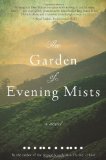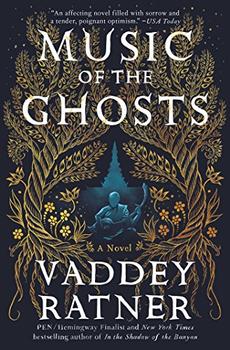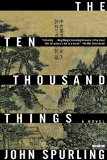Summary | Excerpt | Reviews | Beyond the book | Read-Alikes | Genres & Themes | Author Bio

 Book Reviewed by:
Book Reviewed by:
Poornima Apte
Buy This Book
Malaya, 1951. Yun Ling Teoh, the scarred lone survivor of a brutal Japanese wartime camp, seeks solace among the jungle-fringed tea plantations of Cameron Highlands. There she discovers Yugiri, the only Japanese garden in Malaya, and its owner and creator, the enigmatic Aritomo, exiled former gardener of the emperor of Japan. Despite her hatred of the Japanese, Yun Ling seeks to engage Aritomo to create a garden in memory of her sister, who died in the camp. Aritomo refuses but agrees to accept Yun Ling as his apprentice "until the monsoon comes." Then she can design a garden for herself.
As the months pass, Yun Ling finds herself intimately drawn to the gardener and his art, while all around them a communist guerilla war rages. But the Garden of Evening Mists remains a place of mystery. Who is Aritomo and how did he come to leave Japan? And is the real story of how Yun Ling managed to survive the war perhaps the darkest secret of all?
There is a goddess of Memory, Mnemosyne; but none of Forgetting.
Yet there should be, as they are twin sisters, twin powers, and walk
on either side of us, disputing for sovereignty over us and who we
are, all the way until death.
Richard Holmes, A Meander Through Memory and Forgetting
Chapter One
On a mountain above the clouds once lived a man who had been the gardener of the emperor of Japan. Not many people would have
known of him before the war, but I did. He had left his home on the
rim of the sunrise to come to the central highlands of Malaya. I was
seventeen years old when my sister first told me about him. A decade
would pass before I traveled up to the mountains to see him.
He did not apologize for what his countrymen had done to my
sister and me. Not on that rain-scratched morning when we first
met, nor at any other time. What words could have healed my
pain, returned my sister to me? None. And he understood that. Not
many people did.
Thirty-six years ...
The novel's focus isn't strictly on plot but instead on creating a kind of metaphorical "mist" that only gives glimpses of forgotten memories. Some might find the book slow-going as a result, but the immersive experience of terrific writing about time and place more than compensates. The book is so rich in evocative detail and so steeped in its sense of place that it is hard not to be swept along for the ride...continued
Full Review
(694 words)
This review is available to non-members for a limited time. For full access,
become a member today.
(Reviewed by Poornima Apte).
The Japanese gardener Nakamura Aritomo in The Garden of Evening Mists is an accomplished ukiyo-e artist. This art form, like most others, was a product of time and place but ukiyo-e was especially so.
Hundreds of years ago (1615-1868) the Tokugawa shoguns ruled Japan according to a strict class-based, hierarchical society. They made Tokyo (then known as Edo) their capital and the city grew to be a thriving and vibrant one. The Tokugawa placed warriors such as themselves first, followed by farmers, artisans and merchants. The artisans and merchants were considered lower classes and were subject to severely repressive laws that governed how they dressed and lived. The shoguns understood, however, that the merchant class was a particularly ...
This "beyond the book" feature is available to non-members for a limited time. Join today for full access.

If you liked The Garden of Evening Mists, try these:

by Vaddey Ratner
Published 2018
This "novel of extraordinary humanity" (Madeleine Thien, author of Do Not Say We Have Nothing) from New York Times bestselling author Vaddey Ratner reveals "the endless ways that families can be forged and broken hearts held" (Chicago Tribune) as a young woman begins an odyssey to discover the truth about her missing father.

by John Spurling
Published 2015
A novel of fated meetings, grand battles, and riveting drama, and in its seamless fusion of the epic and the intimate, it achieves a truly singular beauty that deserves to be compared to the classic Chinese novels that inspired it.





The House on Biscayne Bay
by Chanel Cleeton
As death stalks a gothic mansion in Miami, the lives of two women intertwine as the past and present collide.

The Flower Sisters
by Michelle Collins Anderson
From the new Fannie Flagg of the Ozarks, a richly-woven story of family, forgiveness, and reinvention.

The Funeral Cryer by Wenyan Lu
Debut novelist Wenyan Lu brings us this witty yet profound story about one woman's midlife reawakening in contemporary rural China.
Your guide toexceptional books
BookBrowse seeks out and recommends the best in contemporary fiction and nonfiction—books that not only engage and entertain but also deepen our understanding of ourselves and the world around us.